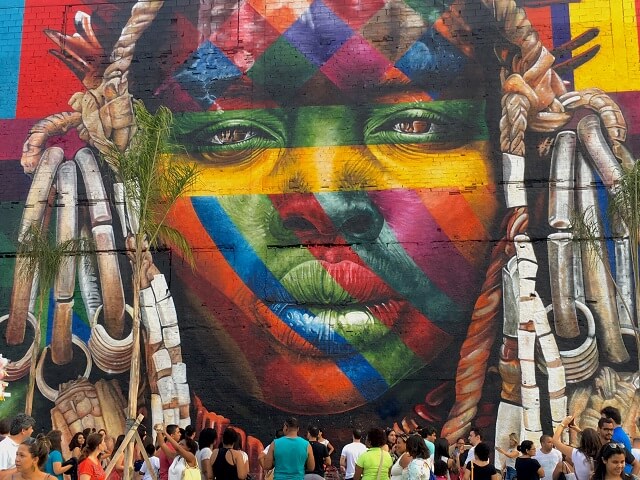
You must have experienced Graffiti Art in various places. It has taken a sharp rise in polarity in the last decade. It is an expressive art form and is very popular, especially among the young generation. Here, we will try to understand What is Graffiti Art, how it started, its type, its History as well as other popular questions surrounding it.
What is Graffiti Art?
It is a type of visual communication in public spaces. However, it differs from street art which is generally illegal. It usually involves the marking of private or public spaces by groups or individuals.
What does Graffiti Mean?
Initially, Graffiti is a reference to antiquated inscribed texts. However, they are like written images or words on the walls of the ancient sepulchers or public buildings.
The evolution of the meaning of “Graffiti” over the years took place to describe graphics or text. For a long period, the word Graffiti was associated with vandalism.
Is Graffiti Art?
Graffiti was once thought of as vandalism. However, it is increasingly popular as a form of art. The general public did not always accept this art with enthusiasm.
This art is a way to take the methods and techniques used in street Graffiti and apply them to other media. However, Graffiti is an art. From city walls to a more traditional art material like canvas, this art changes the place that differentiates it from Graffiti art. This is a way to take Graffiti out of the city and make it available to sell and display in various locations.
It remains a primarily urban art style that is a prime exhibition in public. Recently, graffiti artists and street artists have displayed their graffiti-inspired artworks commercially in galleries and museum spaces.
How Graffiti Started?
Cave Drawings
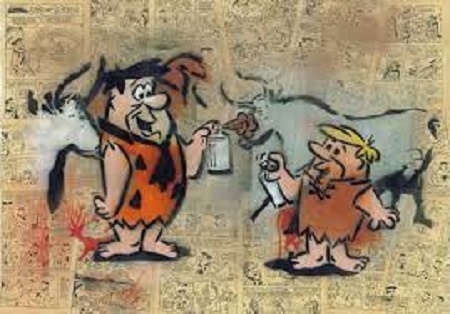
Artistic forms of Graffiti are found all over the world and date back to cavemen. The first drawings of walls are often referred to as Graffiti and Lascaux cave drawings in France. It is believed that the Ancient Greeks and Romans also painted their names and poetry on buildings in public, much like contemporary taggers.
Hip-hop Graffiti Art
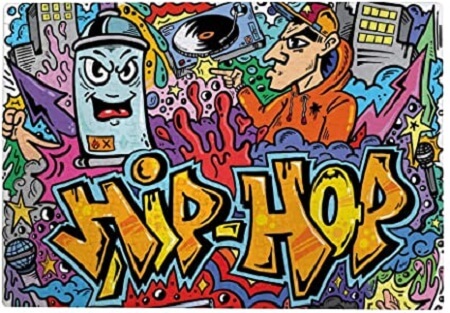
The current and widely recognized version of Graffiti began around the middle of the sixties. Hip-hop Graffiti is a modern-day style of Graffiti.
This type of hip-hop Graffiti was first seen in urban America during the middle of the 20th century. Aerosol paint was invented in 1949 and has made spray cans an affordable transportation-friendly media of preference for contemporary Graffiti.
Contemporary Graffiti Art

The traditional way of creating Graffiti was to carve or paint. However, contemporary Graffiti often uses spray paint. It is also primarily using spray paints to transform a Graffiti style into fine artwork.
The main focus of Graffiti Art is to make an artist’s image and message known to the public. This is the reason, artists present it in public places.
Who Started Graffiti Art?
It’s difficult to determine exactly who started the trend of Graffiti Art. Graffiti isn’t a thing that lasts long, therefore its roots are hard to determine. Graffiti artists tend to be unknown. Other artists typically cover up artworks or have their work taken away or painted over by the authorities or the property owners.
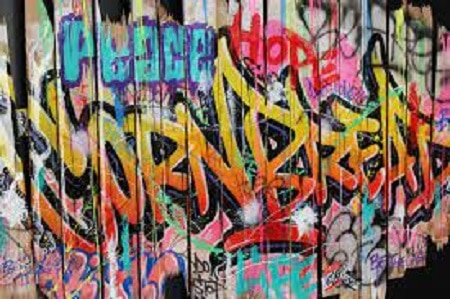
However, artist Cornbread began a movement that quickly spread and increased in its popularity.
Where did Graffiti Art was Started?
Graffiti was very popular in American cities, especially within Black and Latino neighborhoods. It also grew in popularity along with subcultures of hip-hop street art.
Graffiti is now all over the place with thriving Graffiti scenes happening in Berlin, Mexico City, Lisbon, Melbourne, New Delhi, London, Bogota, Buenos Aires, Madrid, and many other urban locations.
What is a Graffiti Tag?
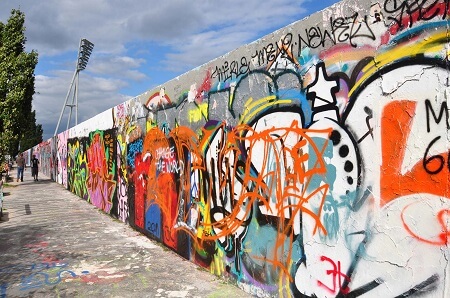
The Graffiti Tag is the first one, most popular, and the simplest form of Graffiti design you see all the time. Moreover, a tag is basically an indication of the Graffiti artist’s “signature” – although artists typically use pseudonyms.
Spray paint bottles in one color are used to make Graffiti Tag. However, it contains the artist’s tag’s name or identification symbol.
What Type of Art is Graffiti?
Graffiti is a revolutionary modern art movement. Additionally, Graffiti artists were influenced by Modern art movements prior to it, like Pop Art, Abstract Expressionist, and Surrealism. Although this has its roots in the contemporary art period, non-contemporary artists create the majority of Graffiti Art.
What is the Purpose of Graffiti Art?
Graffiti is a way to notice or convey a significant message. The goal of such art forms is to communicate a story or let know someone.
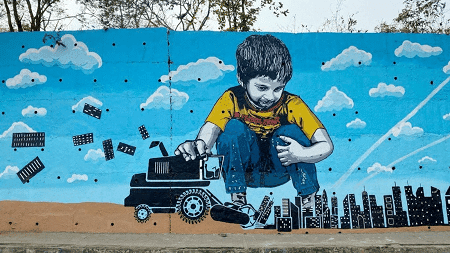
Graffiti lets artists express their individuality, even if it’s not publicly acceptable.
What Does Graffiti Art Represent?
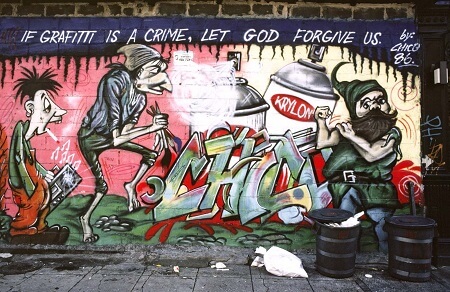
Graffiti is often a symbol of rebelliousness, which is why it is usually the preferred language of the under-represented or marginalized. Graffiti can reveal a lot about the politics, people and subcultures, counter-cultures, and socio-economics in a region.
Is Graffiti Good or Bad?
At first, it was viewed by some as vandalism perception of Graffiti is moving towards appreciation. However, art is subjective, and there are those who might never appreciate Graffiti for what it is.
It is technically an excellent art. The art of creating Graffiti requires a certain amount of talent and some are extreme skills. There are many street artists and graffiti artists whose work clearly shows the highest amount of technical skill or artistic talent.
Some people don’t think it is a good thing. However, acceptance and appreciation aren’t the primary goals of these art pieces. Additionally, it is a counter-culture stance that is for the self-expression of disenfranchised people. It is typically created to be used by other Graffiti artists from the community and does not seek approval from the public.
What is Light Graffiti?
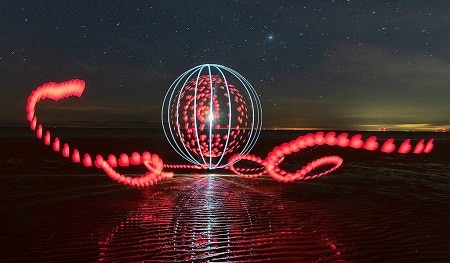
Light Graffiti is a type of performance art. Exposure and utilizing an illumination source to create Graffiti through the air. It is possible to create light Graffiti using a torch, sparkler or fire, or any other source of light. You can capture the photo of the glowing Graffiti in a brief moment.
Where is Graffiti Most Popular?
The popularity of this art is growing all over the world. There are now a greater number of places where Graffiti is available on the street walls.
Places, where Graffiti is the most well-known and visitors, can view world-renowned Graffiti are:
- New York, USA: New York is the home of the Graffiti movement. There are many places in the city to see amazing artwork.
- Bristol, UK: This English town is the home of Banksy, one of the most well-known street and Graffiti artists of today.
- Stockholm, Sweden: The Stockholm Metro Station has so much graffiti and is also the world’s longest art gallery.
- Berlin, Germany: Berlin has an extensive and well-known tradition of public art.
- Sao Paulo, Brazil: Sao Paulo has embraced public art and graffiti.
- London, UK: London’s Brick Lane, The Village Underground, and the Shoreditch neighborhood Shoreditch are the home of many among the most famous Graffiti artworks.
- Paris, France: Paris is home to a lively urban scene that has deep political roots. You will find some radical political critique and an element of rebellion in the Graffiti seen on Paris’s streets.
- Los Angeles, USA: Los Angeles has a strong hip-hop culture. It is not a surprise it is home to hip-hop. Graffiti style is a prominent feature throughout the city.
- Melbourne, Australia: Melbourne is famous as the capital of Graffiti in Australia as well. Hosier Lane in particular has been receiving international attention due to the street art and graffiti it has.
- Mexico City, Mexico: Modern Mexican art is generally popular for its apex of murals. Moreover, it’s not a surprise that the Mexican capital is home to a variety of street art styles and political and religious art.
The distinction between graffiti, graffiti art, and fine art is still blurring. However, numerous well-known street artists exhibit in galleries and museums.
Read Also: 7 Most Popular Types of Painting Techniques – Different Painting Forms Glass Painting – Step by Step Process, Dos and Don’t for Glass Painting Most Popular Indian Folk Art Forms – Best Painting Style in India


